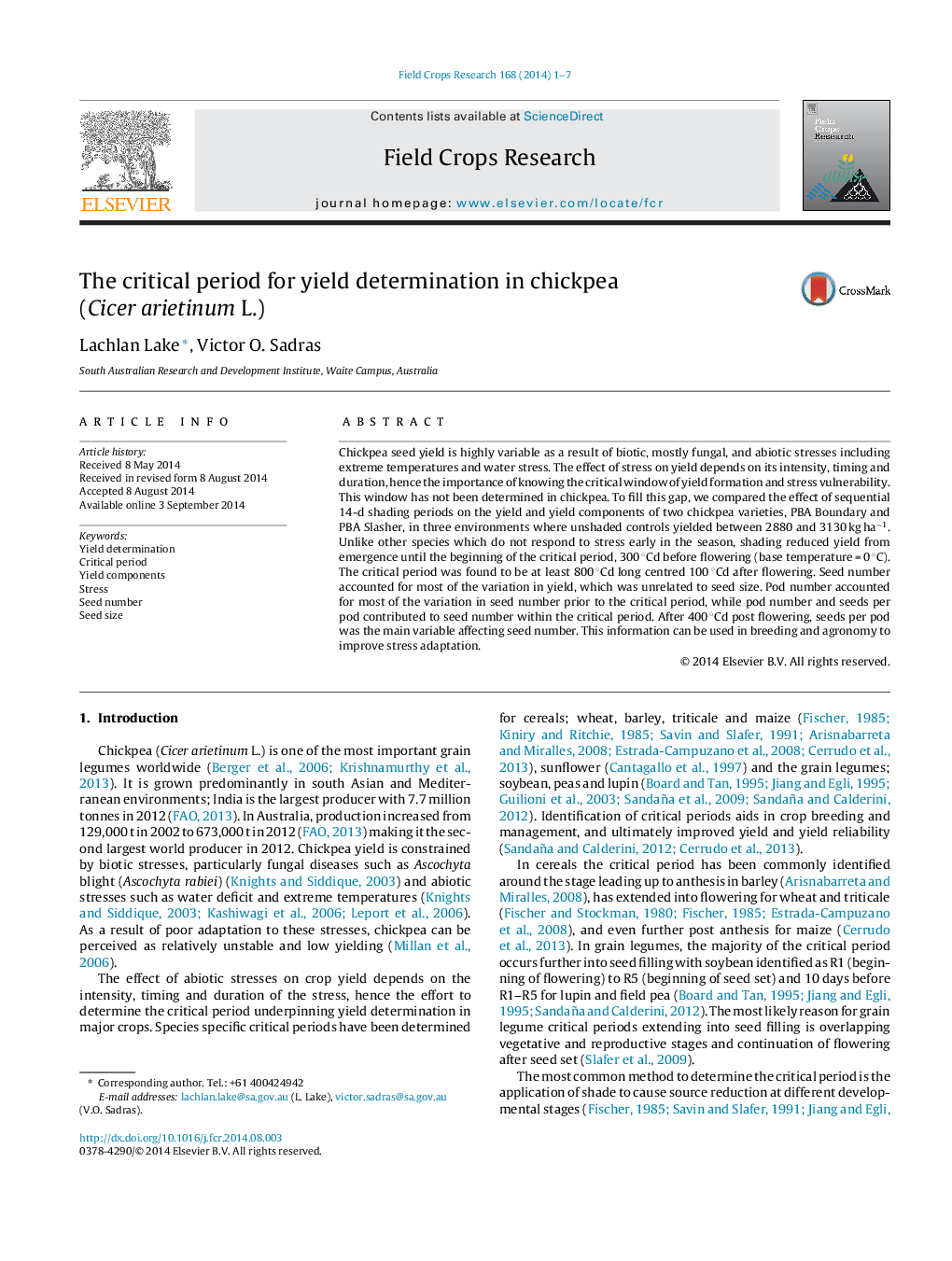| کد مقاله | کد نشریه | سال انتشار | مقاله انگلیسی | نسخه تمام متن |
|---|---|---|---|---|
| 4509964 | 1624695 | 2014 | 7 صفحه PDF | دانلود رایگان |

• We investigated the critical period for yield formation and stress vulnerability in chickpea using shade as a source of stress.
• The critical period was 800 °Cd centred 100 °Cd after flowering.
• Yield was closely related to grain number and unrelated to grain size.
• The primary determinants of grain number were pod number and seed per pod.
Chickpea seed yield is highly variable as a result of biotic, mostly fungal, and abiotic stresses including extreme temperatures and water stress. The effect of stress on yield depends on its intensity, timing and duration, hence the importance of knowing the critical window of yield formation and stress vulnerability. This window has not been determined in chickpea. To fill this gap, we compared the effect of sequential 14-d shading periods on the yield and yield components of two chickpea varieties, PBA Boundary and PBA Slasher, in three environments where unshaded controls yielded between 2880 and 3130 kg ha−1. Unlike other species which do not respond to stress early in the season, shading reduced yield from emergence until the beginning of the critical period, 300 °Cd before flowering (base temperature = 0 °C). The critical period was found to be at least 800 °Cd long centred 100 °Cd after flowering. Seed number accounted for most of the variation in yield, which was unrelated to seed size. Pod number accounted for most of the variation in seed number prior to the critical period, while pod number and seeds per pod contributed to seed number within the critical period. After 400 °Cd post flowering, seeds per pod was the main variable affecting seed number. This information can be used in breeding and agronomy to improve stress adaptation.
Journal: Field Crops Research - Volume 168, November 2014, Pages 1–7